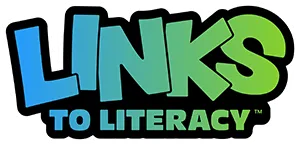Ten Steps to Better Literacy Instruction

Ready to transform your literacy instruction this year?
The science of reading has given us a clear road map to success, but knowing where to start can feel overwhelming. What if I told you the most effective shifts are not only evidence-based (thanks to decades of research), but also small, manageable, and packed with impact? This year, it’s time to take intentional steps that move the needle in literacy and address the well-known “know-do gap.” From systematic phonics instruction to building rich background knowledge, I’ve gathered the top 10 strategies you won’t want to miss. Each one comes with practical tips for teachers and insightful “look-fors” for administrators, ensuring every classroom is set up for success.
Prioritize Systematic and Explicit Phonics Instruction →
- Consider This Shift: Move away from brief mini lessons on isolated skills a few times a week to consistent time for daily phonics lessons that build from simple (basic) to complex (advanced) in a cohesive way, ensuring all students master key decoding skills.
- Look For: A gradual release of responsibility delivery method that involves: (1) clear, explicit modeling of phonics skills during instruction (I Do) and (2) embedded opportunities for students to practice and apply what they’ve learned in real time (We Do and You Do).
Foster Vocabulary Development →
- Consider This Shift: Move away from memorizing definitions and using words in sentences to explicit vocabulary instruction focused on three to five words per week utilizing a routine such as, “The Explicit Teaching of a New Word” from Anita Archer.
- Look For: Multiple opportunities for students to practice and apply knowledge of new vocabulary words in both writing and in conversation through the usage of concept maps, Frayer models, semantic maps, etc. Remembering that students need 10–12 exposures in multiple contexts to commit the meaning of a word into their lexicon.
Build Background Knowledge →
- Consider This Shift: Move away from utilizing a singular book to illustrate a specific skill such as identifying the main idea to using multiple sources such as multimedia, images, stories, books to build knowledge around a topic with skills taught within the text that are supportive of building knowledge around that topic.
- Look For: Scaffolded and independent opportunities to connect students’ background knowledge with what the text is communicating through speaking and writing
Universal Screening With Oral Reading Fluency and Diagnostic Assessments →
- Consider This Shift: Move away from screening students with leveled texts to universally screening with an Oral Reading Fluency measure. Oral Reading Fluency has the strongest correlation (.91) in predicting a student’s reading comprehension.
- Look For: Screening all students in grades 1–5 on an Oral Reading Fluency measure utilizing a platform like Acadience® to determine at-risk students who need intervention. Follow up with diagnostic assessments for students falling in below average or well-below average range to pinpoint specific skill deficits related to word recognition skills.
Scaffolded Support →
- Consider This Shift: Move away from over scaffolding and providing too much support, preventing students from fully engaging in the learning process to a gradual release of responsibility model, ensuring students engage in productive struggle while working independently. This better ensures students become cognitively independent learners who are capable of problem-solving and mastering content on their own.
- Look For: Students are visibly participating in the learning process through multiple and varied opportunities to respond ensuring they are not passively receiving information, but instead having to engage in cognitive work independently and actively.
Differentiation Through Skills-Based, Flexible Small-Group Instruction →
- Consider This Shift: Move away from generic reading groups based on levels or a universal screener score to groups based on skill deficits.
- Look For: Diagnostic assessment data is utilized to identify instructional needs and students are grouped based on shared specific skill needs e.g. consonant blends and short vowels. Interventions such as LINKS to Literacy™ are evidence-based and aligned to addressing the identified needs of the group.
Streamlined Professional Learning Opportunities Focused on Best Practice →
- Consider This Shift: Move away from one-time professional learning opportunities to targeted, effective, and streamlined opportunities that not only address specific areas for improvement but provide support for teachers to transfer the knowledge gleaned back to their instructional practices.
- Look For: Comprehensive professional development plans focused on one to two sustained priorities with intentional monitoring utilizing a framework such as Tom Guskey’s “5 Critical Levels of Evaluation.”
Implement Retrieval Practice →
- Consider This Shift: Move away from traditional methods where teachers review content simply by re-exposing students to original material such as, “Here’s what we did last week” to engaging students in actively recalling information from memory.
- Look For: Lessons that involve the utilization of activities at the beginning of a lesson that ask students to retrieve such as brain dumps, five words, flash forward or rose, thorn, bud.
Interaction With High-Quality Materials →
- Consider This Shift: Move away from using materials that are low-rigor, unfocused, or lack a clear alignment to science and evidence-based reading instruction to using high-quality, evidence-based materials with high-efficacy ratings that align with the critical components of the science of reading.
- Look For: Once an evidence-aligned program is being implemented, focus on degrees of implementation to ensure the program is being utilized as intended. The moment we start to take out and move components of proven, evidence-based programs around or remove them entirely, it no longer becomes evidence-based.
Teacher Clarity/Judicious Practice Focused on Critical Content →
- Consider This Shift: Move away from simply covering all curriculum content without clear prioritization or development of depth to focusing on critical content that is essential for student success. This involves identifying the most important concepts, skills, and standards students must master to progress.
- Look For: Evidence there are clearly defined learning goals tied to standards and success criteria that explicitly communicates to students how they will demonstrate mastery.
As we embrace these powerful shifts in literacy instruction, let’s remember that change doesn’t have to be daunting…it can be exciting! With each small and manageable step, we’re laying the foundation for strong readers, deeper thinkers, and more confident learners. Let’s make this year a game changer!

